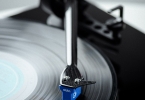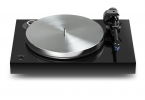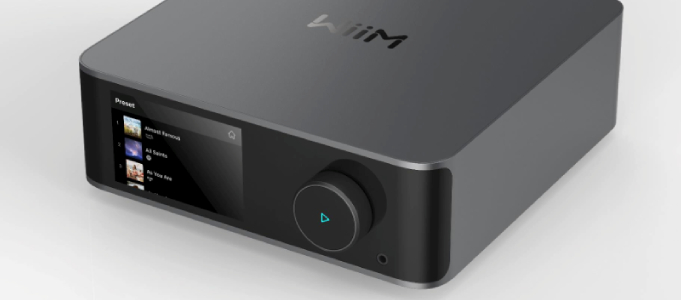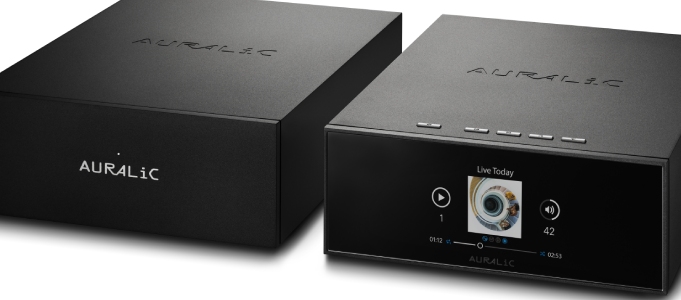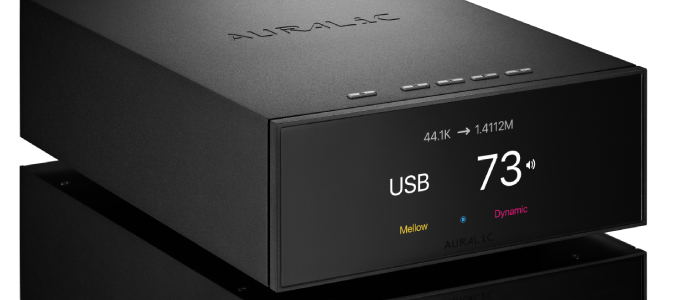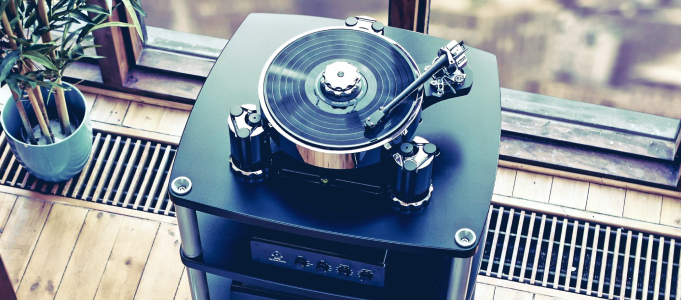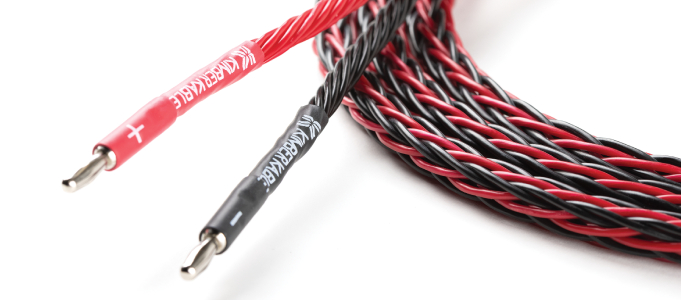Pro-Ject X8 Turntable and DS3 B Phono Box Review
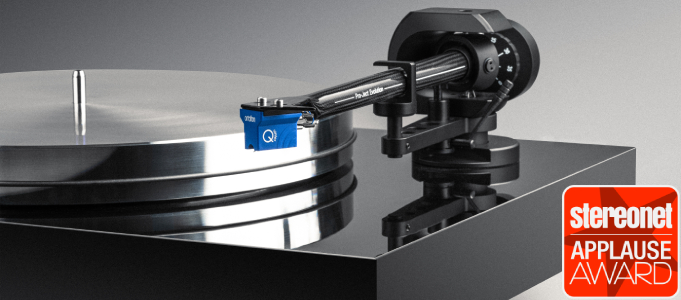
James Michael Hughes is most impressed by this balanced turntable/ phono stage combination…
Pro-Ject
X8 Turntable and Phono Box DS3 B
£2,099 and £529, respectively

“True Balanced Connection” is Pro-Ject's rallying cry for its new X8 turntable and DS3 B phono stage. This promises lower noise and reduced interference, plus better sound quality with increased detail and dynamics. So has this well-established turntable specialist just reinvented the wheel?
If you're thinking of buying a new record player, then it probably won't have escaped your attention that Pro-Ject is a major player when it comes to quality vinyl spinners. The range includes a vast array of models, from budget to high end. The new X8 is basically a scaled-down version of Pro-Ject's Xtension 9. It has a slightly lighter platter (5.1kg compared to 5.4kg), plus TPE damped feet rather than magnetic ones, and an MDF plinth rather than MDF and metal granules. It also comes fitted with a cheaper cartridge – Ortofon's Quintet Blue.
IN-DEPTH
The new X8 costs a bit less than the Xtension 9, and while not inexpensive, it still offers excellent value. It's a two-speed belt-drive design featuring a solid MDF plinth that comes in a high gloss piano black or white or real wood walnut veneer.

The heavy 5.1kg, 3cm thick platter is machined from a solid aluminium billet and damped with a ring of TPE rubber. The main bearing uses an inverted ceramic ball with magnetic support for smoother running and reduced bearing wear at the point of contact. The latter has extremely low friction; the platter rotates for a remarkable 4 minutes, 5 seconds when left to run down from 33.3rpm with the belt removed. Even the air-bearing Holbo I recently reviewed only lasted for 3 minutes! The bearing itself is quite short in terms of depth, but play-free.
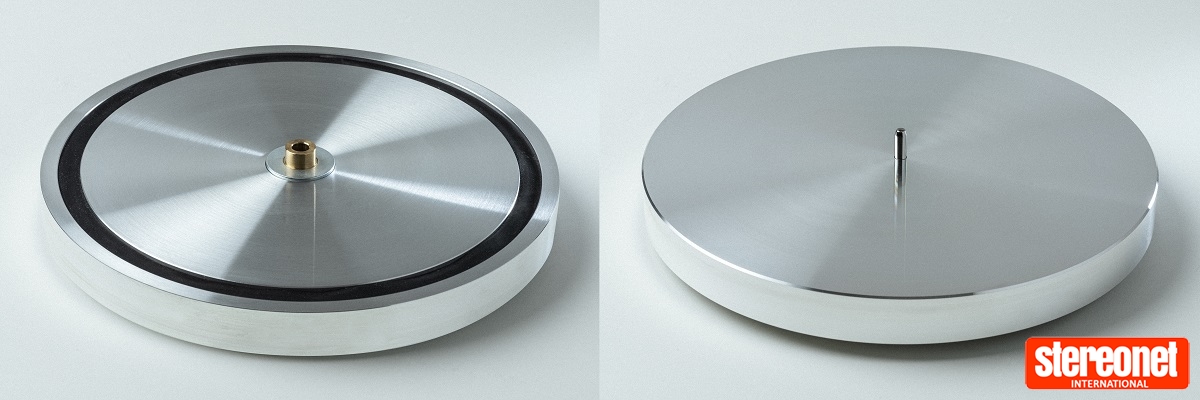
A rumble figure of -75dB is quoted, but there's no 'rumble' as such. With the stylus touching the plinth and volume set to maximum, there's no bearing noise at all – only a very faint, barely audible motor drone around 400Hz. Otherwise, the X8 is absolutely silent. The motor itself is electronically governed and powered by a small 15V plug-top supply. With such a heavy platter, it takes about 5 seconds to reach 33.3rpm from a standing start. However, once the platter reaches the correct running speed, it's totally stable, and speeds are rock-steady.
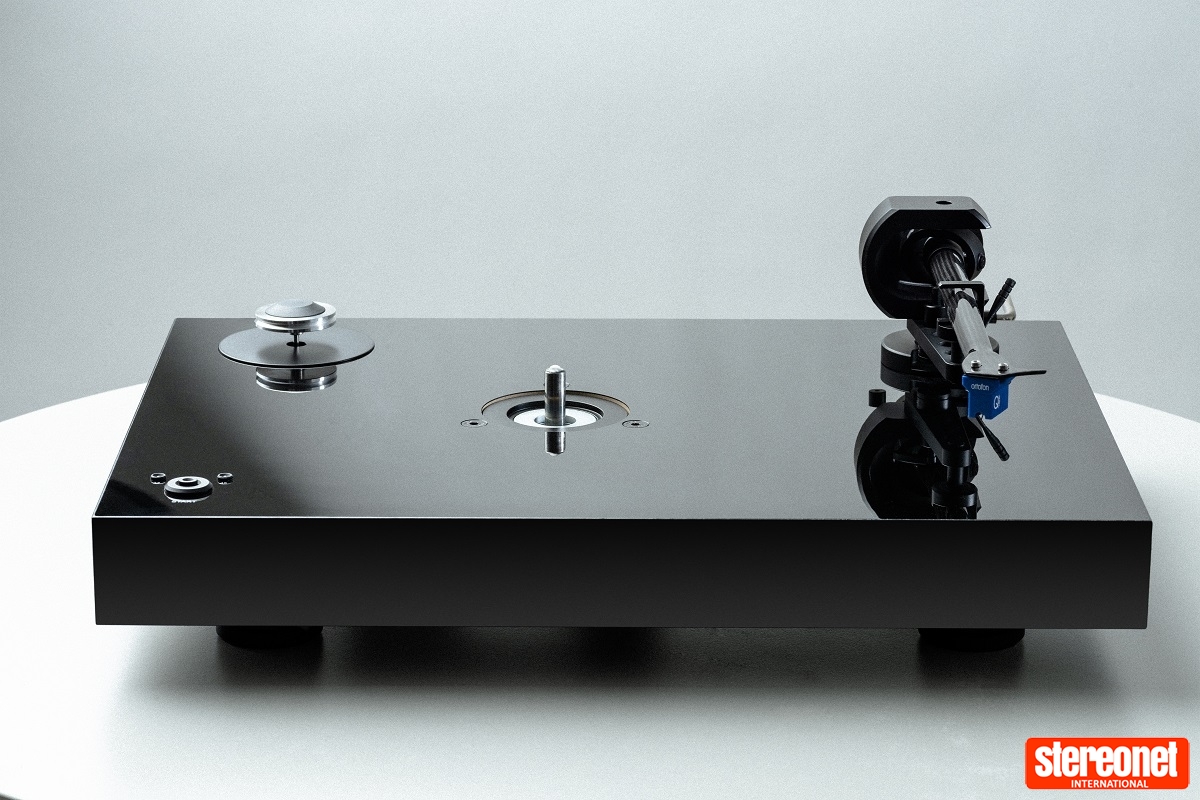
The X8 comes complete with Pro-Ject's popular 9CC Evolution carbon-fibre tonearm. This features a one-piece tapered carbon-fibre arm tube with ABEC 7 ball bearings in a heavy C shaped bearing cradle. VTA and azimuth are adjustable for optimum cartridge alignment. The standard 9CC Evolution comes with a removable screened 1.2m cable terminated in RCA phono plugs. However, you will need a different cable that terminates in a pair of three-pin XLR plugs for balanced operation.
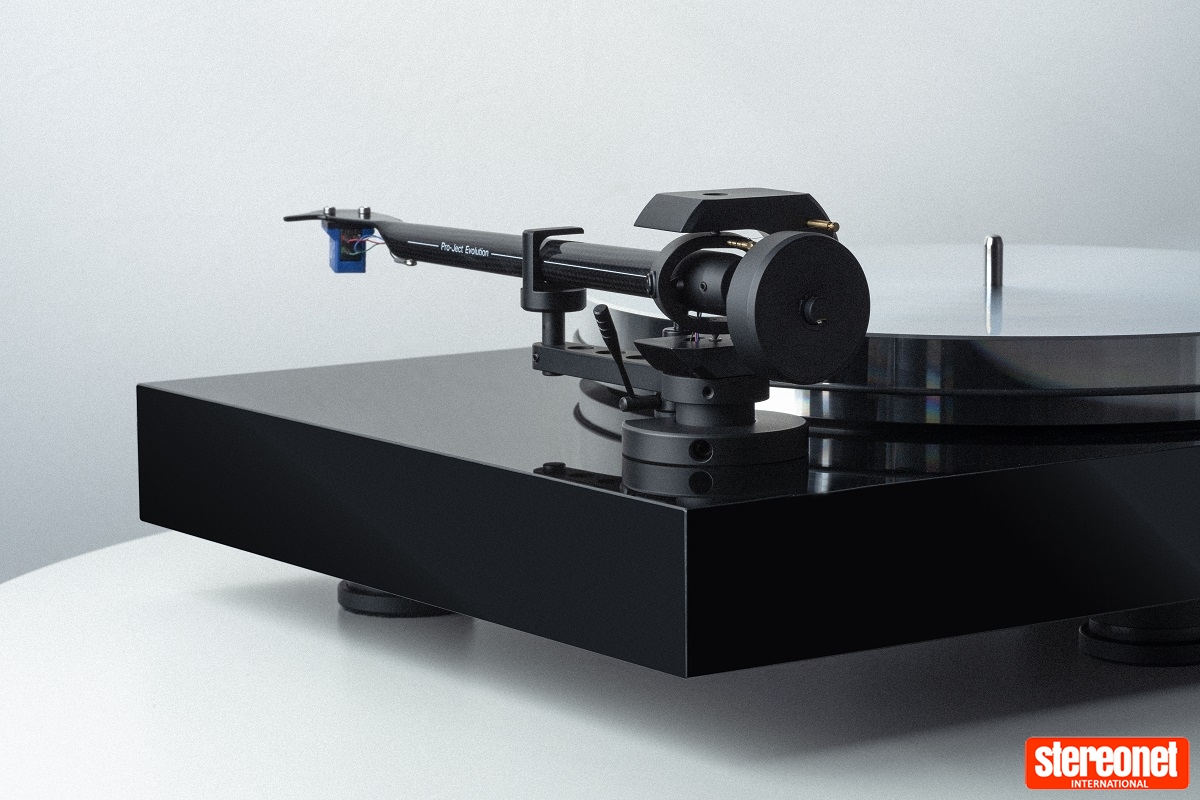
The X8 is bundled with Ortofon's excellent Quintet Blue low output moving coil cartridge in the UK. Purchased separately, this costs a very reasonable £350. It features an ABS body, weighs 9g, and has an output of 0.5mV. The generator features powerful neodymium magnets. An 8x18um elliptical stylus tip is specified, and tracking weight is a robust 2.1 to 2.5g, which helps improve stability while reducing surface noise. Quoted frequency response is 20Hz to 25kHz. A well designed, easy-to-fit protective stylus guard is another welcome feature.
Nowadays, many turntables are supplied without a lid, but the X8 comes with a hinged item made from clear polystyrene. This protects the deck while keeping dust off. Great! In my view, every turntable should come with one.
GET THE BALANCE RIGHT
Retailing at a keen £529, the DS3 B phono stage offers users a choice of balanced and unbalanced inputs and outputs. It's suitable for MM and MC cartridges, and has switchable gain levels of 40dB, 45dB, 50dB, 55dB, 60dB, and 65dB. Loading resistance is either fixed at 47k ohms for MM pickups or infinitely variable (stepless) from 10 ohms to 1k ohms for MC pickups. Capacitance loading values of 50, 150, 300, or 400pf are also offered, and usefully all adjustments can be made directly from the front panel.

Unusually, Pro-Ject elected to use discrete transistors for the DS3 B rather than op-amps – the latter being the choice of most manufacturers these days. The company claims that discrete devices deliver superior sound in terms of naturalness and dynamics, and it's a widely shared view among the cognoscenti. The specs are extremely good, with claimed distortion typically less than 0.005% or 0.01% worst-case. The RIAA curve has a claimed accuracy of 0.25dB from 20Hz to 20kHz, and noise levels are very low. At 40dB gain (MM), noise is -104dBV while at 60dB gain (MC) it's -85dBV. There's no hum either, as the DS3 B is exceptionally quiet.
It's possible to connect two turntables to the DS3 B – one balanced via XLRs, and the other via the unbalanced RCA sockets. The settings for each input can be applied independently, and the DS3 B will remember your selected options even when the power is switched off.
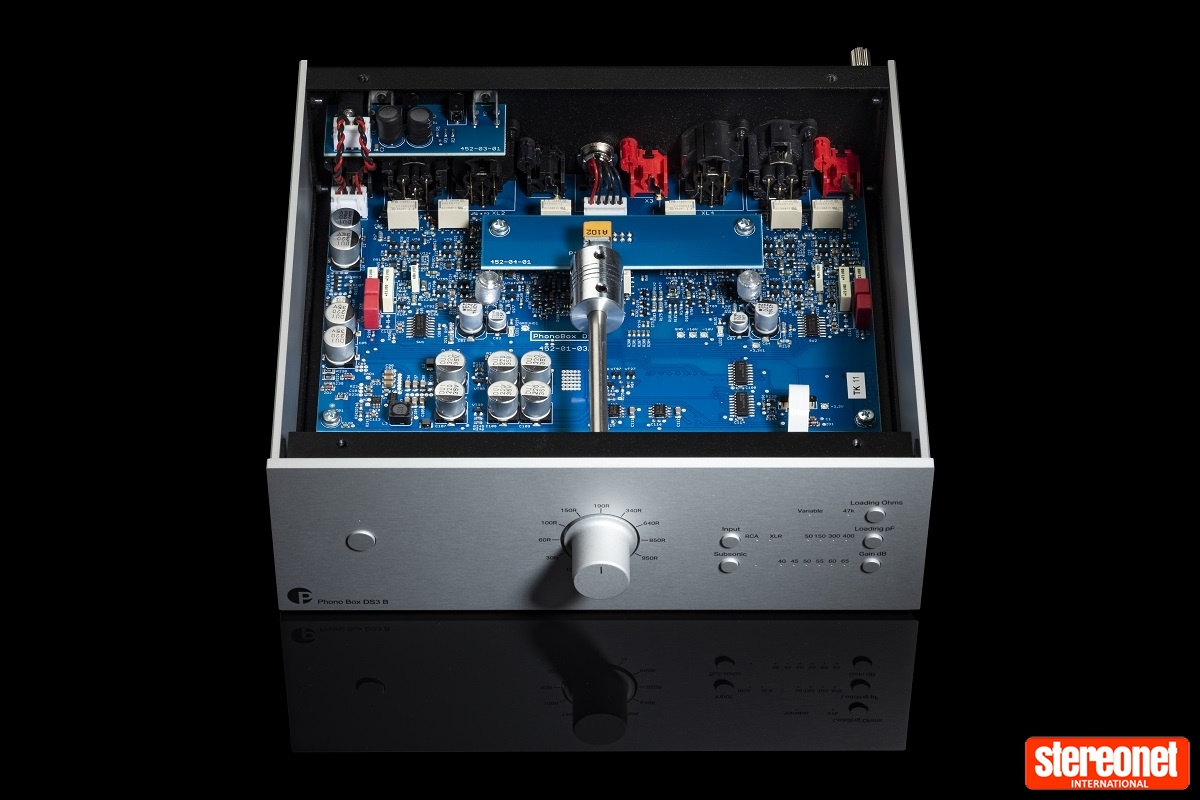
So why balanced? Most signal connections are single-ended or 'unbalanced', meaning there's a 'hot' signal lead and a ground. With shielded cables, the ground usually acts as a screen and entirely surrounds the signal lead to protect it from hum and noise. This arrangement works well but can be improved on. With balanced working, you have two signal cables – one positive and the other negative. So as the signal in one cable goes positive, the signal in the other cable goes negative – a bit like how two legs drive a bicycle…
You might also have a screen around these two cables. The screen would be grounded but would not carry a signal. One benefit of balanced working is increased gain. In an amplifier, you'd get 3dB extra from the output stage, plus a further 3dB from the input stage, 6dB in total. The other is that any noise – hum or interference – that contaminates the two signal cables will be cancelled-out when the balanced signal is finally unbalanced. Known as common-mode rejection, it occurs because the two signal cables are 180 degrees out of phase.
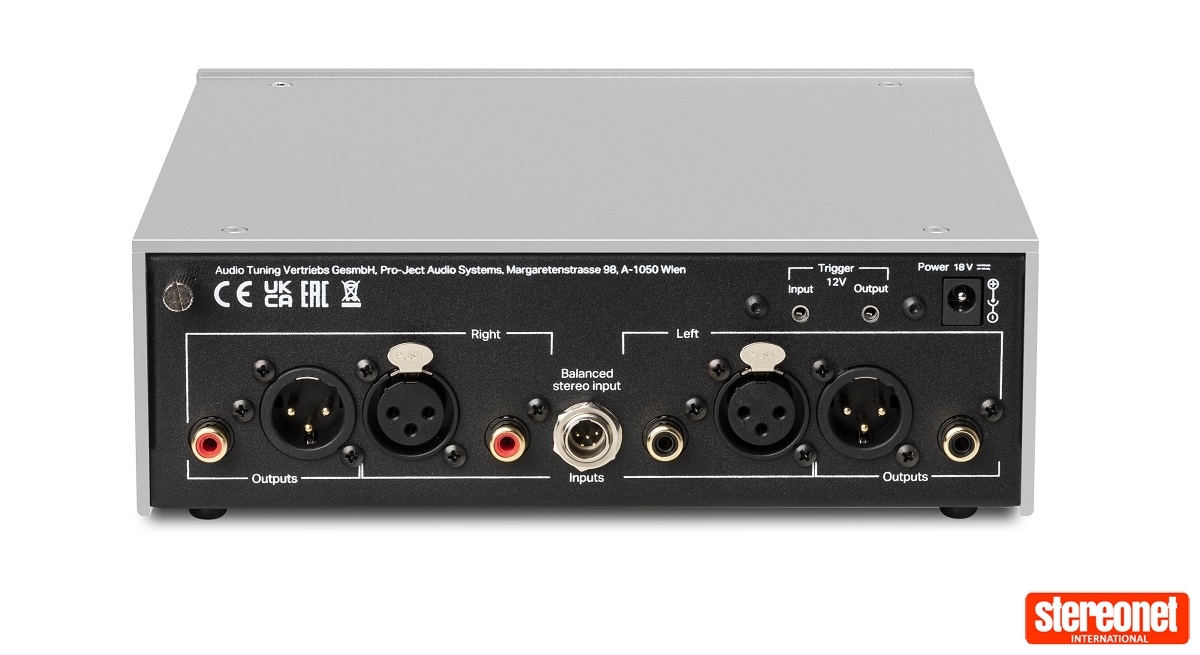
Pickup cartridges – be they moving coil or moving magnet – have positive and negative output pins that are not grounded, so they are perfectly suited for 'balanced' operation. Using your pickup with a balanced phono stage gets the best from it. Benefits include increased gain and significantly reduced noise and interference. With radio frequency interference, the adverse effects of RFI might not always be obvious in terms of audible noise, but once RFI is removed, the sound will be cleaner and more transparent. Balanced also results in a subjectively more powerful sound, with greater impact and wider dynamics.

For the purposes of this review, the Pro-Ject X8 took the place of Vertere's excellent and very expensive MG-1 in my set-up. The MG-1 with Vertere's SG-PTA tonearm and MC-1 Mystic cartridge costs around £11k. Indeed, just on its own, Vertere's MC-1 cartridge costs about £100 more than the complete X8 package!
THE LISTENING
First impressions were very positive. As expected, my reference Vertere turntable was just that little bit better, and the X8 didn't quite equal the subtlety and relaxed authority of the more expensive deck. Yet the difference was by no means night and day, and as the X8 settled down, I began to admire its simple unflappable clarity and general air of solidity, its focus and precision. Maybe that ethereal effortlessness and refinement you get with the best high-end vinyl spinners was absent, but overall the sound was still excellent for the price.

I initially used the X8 into the phono stage of Elipson's PF1 preamp – just as I had with the Vertere. It was only after gaining a clear idea of how things were sounding that I introduced Pro-ject's DS3 B phono stage as a point of reference. With the X8 going into the DS3 B's standard unbalanced cable, I connected the phono stage via its unbalanced output to the unbalanced line input of my Elipson PF1 preamp.
The sound was clear, open and detailed, very much on a par with Epsilon's excellent phono stage. I listened unbalanced for a while, then connected the DS3 B's balanced output to the PF1's balanced line input via a set of Chord cables with 3-pin XLRs at both ends. This resulted in a 6dB increase in output level and a bigger and more dynamic sound, with much greater breadth and depth.
With the Elipson's precise volume control allowing adjustments in 0.5dB steps, I was able to match levels to equalise for the higher output. But subjectively, it seemed as though the balanced option was just a tad louder. In fact, it wasn't, but it simply sounded more assertive and dynamic.

Next, I replaced the unbalanced arm cable (with RCA phono plugs) for the balanced XLR option. This resulted in a further 3dB increase in level and a sound of still greater transparency and fine detail. The music projected strongly against an even quieter, more inky black silent background. On Jeeps Blues from Jazz at the Pawn Shop, there was impressive contrast between the quieter, more introspective sections and the powerful projection of the saxophone solo, which seemed to come out of nowhere from that aforementioned inky-black background.
The improvement in clarity, separation, and overall refinement was not subtle. Adding the DS3 B and going fully balanced, the X8 went from sounding very good to outstanding. Subjectively, I was now listening to a much better vinyl spinner – one that might have cost three times as much. Everything seemed a whole lot better. Balanced operation noticeably improved bass quality in terms of depth, clarity and dynamics.

For example, listening via unbalanced cables, the double bass on the album Reveal by Elles Springer had seemed a bit ill-focused and muddy. Using an acoustic double bass gives a warmer, looser bottom end than you'd get with a bass guitar, but possibly at the expense of firmness and control. Going fully balanced really sorted this out, keeping the woody warmth of the acoustic bass while improving focus. At the same time, tracks on the album which had a tighter bass, such as Like Bonnie and Clyde, also sounded cleaner and crisper. That's the beauty of balanced working; it's all things to all men and gives an across-the-board improvement in every area.
The deck's TPE damped feet delivered good isolation from external vibration and footfall. When tapping the support shelf, the turntable was stood on, very little noise was transmitted. The X8's MDF plinth proved very well damped, too. Likewise, the tonearm is not prone to picking up noise and vibration. Many tonearms are a little microphonic; touch or tap the lift/lower device or the cartridge finger lift, and vibration is transmitted to the pickup, which you hear through the loudspeakers. Yet the 9CC Evolution tonearm/ Ortofon Quintet Blue seemed unusually free of this. If you rub or tap the lift/lower lever, or the assembly that holds the armrest, there's hardly any transmitted vibration or noise.

The arm bearings offer low friction, but our review sample appeared to have very slight free play. I also noticed a slight lack of uniformity in the machining of the turntable platter; there's a very minor up-and-down variation – about 0.05mm as it rotates. This error is insignificant and difficult to see and did not affect performance – but hopefully, it's a one-off.
Given its low price, the Ortofon Quintet Blue cartridge sounds extremely good. It delivers a clean and open sound with low surface noise and stands comparison with pickups costing considerably more. Personally speaking, I like that it's designed to be used at a highish downforce of up to 2.5g. At this sort of playing weight, the stylus 'cleans' the grooves of your vinyl records, reducing surface ticks and pops by dislodging debris in the groove. But aside from that, the Quintet Blue is a very good, highly musical pickup and a fantastic bargain too. It tracks extremely well.
THE VERDICT
 It is hard not to be impressed by Pro-Ject's new X8 turntable package and DS3 B phono stage combination. Especially when you exploit its balanced input/output options, it delivers truly high-end vinyl performance at a surprisingly reasonable price. It's also a nice turntable to use. Everything functions smoothly, and it is large and spacious without being too big – and how nice to have a turntable with a lid once again! I even like its styling and selling price. A thoroughbred in every respect, it's well worth an audition.
It is hard not to be impressed by Pro-Ject's new X8 turntable package and DS3 B phono stage combination. Especially when you exploit its balanced input/output options, it delivers truly high-end vinyl performance at a surprisingly reasonable price. It's also a nice turntable to use. Everything functions smoothly, and it is large and spacious without being too big – and how nice to have a turntable with a lid once again! I even like its styling and selling price. A thoroughbred in every respect, it's well worth an audition.
Visit Pro-Ject Audio Systems for more information
- Henley Audio
Distributor
James Michael Hughes
An avid audiophile for many decades, Jimmy has been writing about hi-fi since 1980 in a host of British magazines, from What Hi-Fi to Hi-Fi Choice. Based in London, England, he’s one of the UK’s most prolific record and CD collectors – no streaming service can yet match his amazing music collection!
Posted in:Hi-Fi Amplifiers Phono Preamplifiers Applause Awards 2022 Turntables Phono Cartridges
Tags: pro-ject henley audio
JOIN IN THE DISCUSSION
Want to share your opinion or get advice from other enthusiasts? Then head into the Message Forums where thousands of other enthusiasts are communicating on a daily basis.
CLICK HERE FOR FREE MEMBERSHIP




